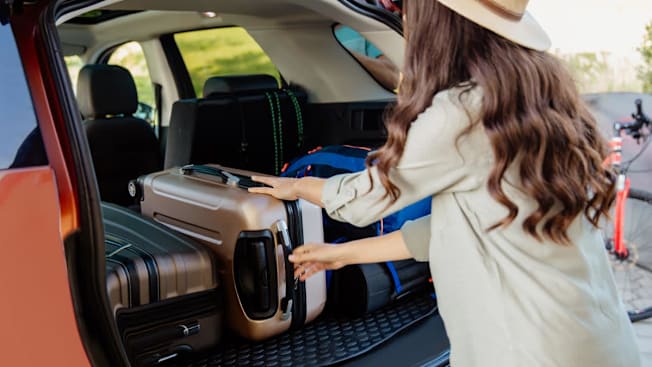
We measure the space behind the raised third-row seat and the overall cargo room for each model
By Jon Linkov
Many consumers consider a vehicle’s cargo room a key shopping consideration, whether it’s for holding groceries, carting the kids to weekend activities, or taking a long road trip. But manufacturers’ claims of abundant space don’t always reflect real-world utility.
Consumer Reports measures and evaluates cargo space differently than automakers. For SUVs, minivans, and wagons, we look at the largest “box” that can fit into the cargo bay as far as possible without preventing the hatch from closing. Cargo capacity is the volume enclosed by that box.
That gives consumers a better idea of the cargo they can fit in the back, whether it’s a new dishwasher, two dozen bags of mulch, or a big-screen TV coming home from the electronics store.
Our auto engineers also measure the luggage capacity behind the raised third-row seat, because automakers market three-row vehicles as capable of carrying the entire family and their luggage. But as anyone who has tried to do that knows, the space behind the raised third-row seat isn’t always very generous. That’s why we also evaluate how much luggage can fit behind the raised third-row seat.
Scroll down to see our rankings for both the vehicle’s overall cargo room and its third-row luggage room. Click on the model names to visit their model pages, where you’ll find road tests, reliability ratings, pricing, and much more.
Our adjustable pipe-frame box lets CR’s auto testers measure the largest item you can fit through the cargo opening and into the vehicle. Here we are evaluating the Kia Carnival Hybrid.
Photo: John Powers/Consumer Reports
Total Cargo Capacity
We measure cargo room for SUVs, minivans, and wagons with an expandable rectangular pipe-frame “box.” We stretch it to fit through the rear opening, maximizing the box’s volume with the rear seats folded yet allowing the rear gate to be closed. We then score cargo capacity by measuring the volume enclosed by that box.
Below, we have broken out our tested minivans and three-row SUVs into four categories. We identify which ratings group they are in (Midsized SUV, Large SUV, and Minivan) and rank them from most to least volume within the category. In our measurements, we round up to the next cubic foot for any score that is 0.5 or greater. (See our SUV and minivan/3-row SUV buying guides.)
To measure the usable volume behind an SUV’s raised third-row seat, we use a set of typical-sized suitcases and duffel bags. Here we are evaluating the Chevrolet Traverse.
Photo: John Powers/Consumer Reports
Room Behind the Third Row
We measure third-row luggage capacity by seeing how many suitcases and duffel bags can fit behind the raised third-row seat. Vehicles are ranked from most to least luggage capacity within the category.
In cases where multiple vehicles can hold the same amount of luggage, we rank them in order of their third-row-seat comfort score, which is determined by a jury of testers. For example, both the Lexus TX and Chevrolet Traverse can hold three suitcases, but you’ll be more comfortable riding in the TX’s third row than the Traverse’s.
Consumer Reports is an independent, nonprofit organization that works side by side with consumers to create a fairer, safer, and healthier world. CR does not endorse products or services, and does not accept advertising. Copyright © 2025, Consumer Reports, Inc.